FPS and Handhelds: A Short Retrospective of an Unlikely Pair
Looking back at the history of first-person shooters on handheld consoles

When we talk about video game genres on consoles, both home, and handheld, one of the most famous is the First Person Shooter (FPS). Thanks to titles such as the Call of Duty series, the once restricted genre (early days saw consternation over the gore, "realistic" violence, and concern by players over the lack of mouse and keyboard controls) has seen a boost in popularity. In some cases and on some consoles, the FPS genre has surpassed fan favorites like platformers and JRPGs to become one of the most recognizable and beloved type of gaming experiences.
The FPS genre always had its roots in the PC market, with many classics such as Doom and Duke Nukem 3D. On consoles, controller-based movement and shooting were a little slower and more clumsy, but eventually, games like Halo and Call of Duty started to attract gamers to the home console platforms.
But while the transition to the consoles worked pretty well, the same can’t be said of the handhelds. Since the introduction of the Game Boy by Nintendo in 1989, the video game market always had a space dedicated to pocket platforms. And while many famous genres managed to make a dent in this specific market, FPS games always struggled. From the Game Boy to the PlayStation Vita, we take a look at the long list of attempts that many developers made to allow one of the most famous styles of gameplay to work on more limited hardware.
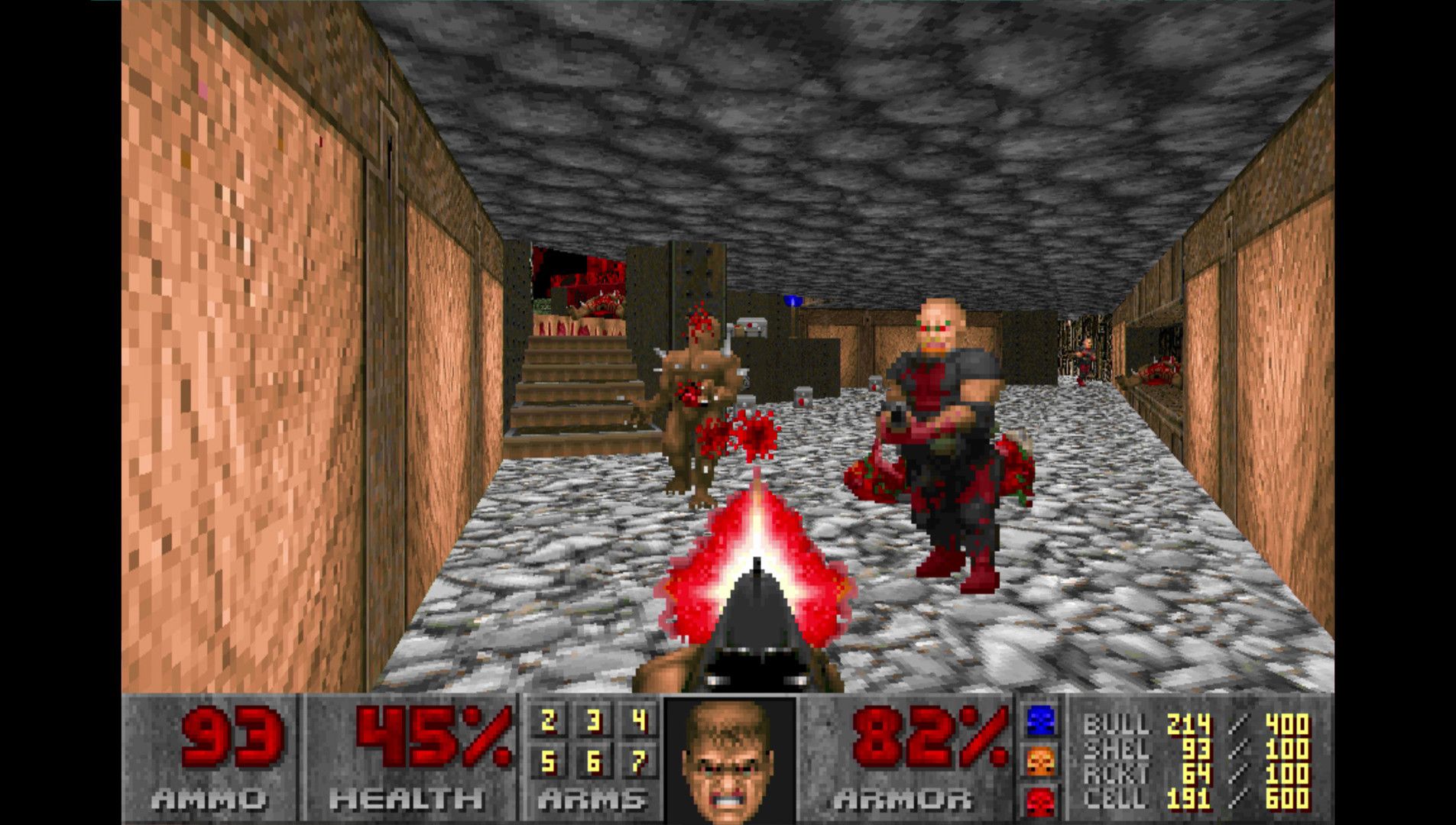
The evolution of FPS
Starting life as one of the distinctive genres that only PC players could enjoy, the FPS was made famous on those machines through games like Doom and Wolfenstein 3D. Thanks to the combination of the computer's mouse and keyboard, playing FPS games was easy. What's more, customization options created by fans such as mods that add new weapons and maps helped popularize the genre on the PC market.
On consoles, FPS games tried to reach the same status as their PC counterpart. Many platforms received ports of famous games, like Doom on the Super Nintendo and Duke Nukem 3D on the original PlayStation. Some developers also created new classics such as Goldeneye 007 on Nintendo 64, still loved to this day by many fans.
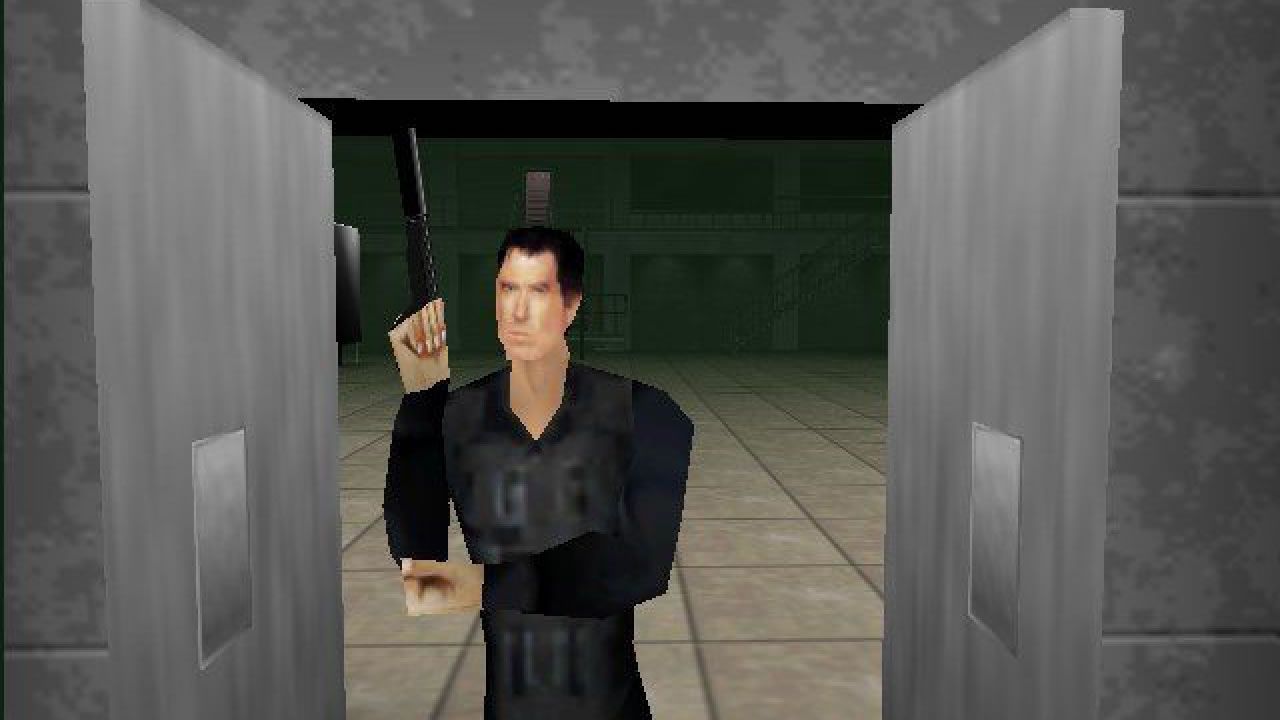
But for many years one of the biggest problems console developers faced when creating FPS games was the controls. How could they make games that control as smoothly as the ones fans could play on the PC? Through the early console generations, many games tried to answer this question. Goldeneye 007 offered the option to use two gamepads for movement and aim. This was a technique that would be later adopted as the universal way with the creation of the first PlayStation DualShock and the launch of Alien Resurrection in 1999. The game utilized both analog sticks to their maximum potential, using the left stick exclusively for movement while the right one aimed the weapons.
Such control configuration was considered weird at first. Gamespot in their review of Resurrection said “The game's control setup is its most terrifying element. The left analog stick moves you forward, back, and strafes right and left, while the right analog stick turns you and can be used to look up and down.” This soon became the default style of play, however, when Halo: Combat Evolved and the Medal of Honor series started to adopt it.
Handhelds: A challenge to any developer
While the consoles adapted to the genre, the handheld market was always a challenge to any developer that tried to create its own FPS. Two of the biggest obstacles to overcome were the reduced number of buttons and the limited power of the machines. Until the PSP and Nintendo DS launched in 2004, many FPS tried to show off pseudo-3D engines in an attempt to distract consumers from the lack of good controls or quality.
The first FPS game to release on a handheld platform was Faceball 2000, released in 1991 for the Game Boy. Although the machine wasn't known for its power, the game was a good surprise, bringing 3D graphics to the machine, and multiplayer up to 16 players.

While Faceball 2000 was better than expected, the game wasn't exactly a success. As a result, neither the Game Boy nor its successor, the Game Boy Color, saw the release of other FPS. The GBC itself saw the cancellation of the only FPS the platform would have receive. Tyrannosaurus Tex would bring 3D visuals to the handheld and a much higher focus on deathmatches multiplayer.
Come 2001, Nintendo released the Game Boy Advance, a true successor to the old hardware that the original Game Boy and its color counterpart utilized. The extra power of the GBA made it easy for many different genres to shine, even those that always had a problem adapting and selling on the market. JRPGs, fighting games, and of course, FPS started to appear with more frequency.
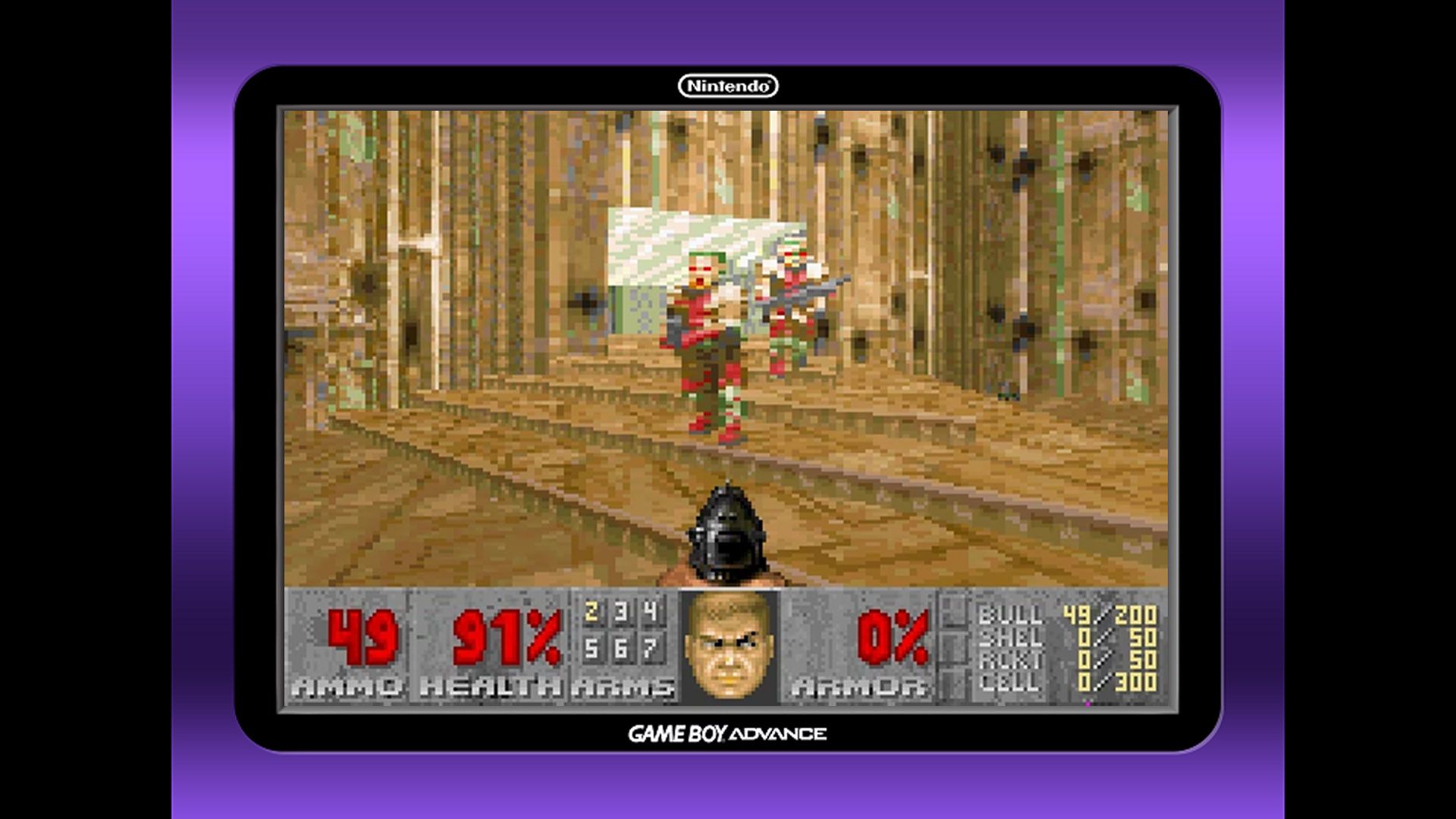
It's a little ironic that one of the first FPS to grace the Game Boy Advance was the classic Doom, considered by many as the grandfather of the genre. Based on the Jaguar version, the port for the handheld had some differences, mainly concerning its graphics and sound effects, but the gameplay was still similar to its counterparts. The game also came with eight unique multiplayer maps, and it was successful enough to warrant the release of its sequel, Doom 2, one year later in 2002.
Unlike its predecessor, Doom 2 was developed using technology called the Southpaw Engine, which would be utilized in many different FPS that would appear on the GBA. Because of this, many things would have to adapt to the new engine, with some changes to the gameplay.
The year 2002 also saw the release of Wolfenstein 3D on the Game Boy Advance. Unlike its younger brothers, this version was an almost exact copy of the original release on MS-DOS, with the only difference being the lack of music. With these three games on the handheld, the system showed that it was possible to adapt the genre for weaker hardware.

After Doom and Wolfenstein, the GBA received ports of home console FPS and some original games based on classic IP. 007: Nightfire was an almost perfect copy of the console version on the handheld, and Duke Nukem Advance tried to offer the same experience as the classic Duke Nukem 3D on lesser hardware.
On the original side of things, there were some good and bad games. Ecks vs. Sever and its sequel, Ballistic: Ecks vs. Sever were developed by Crawfish Interactive and released between 2001 and 2002. The titles were created from the ground up for the GBA and utilized the system to deliver experiences that would surprise players.
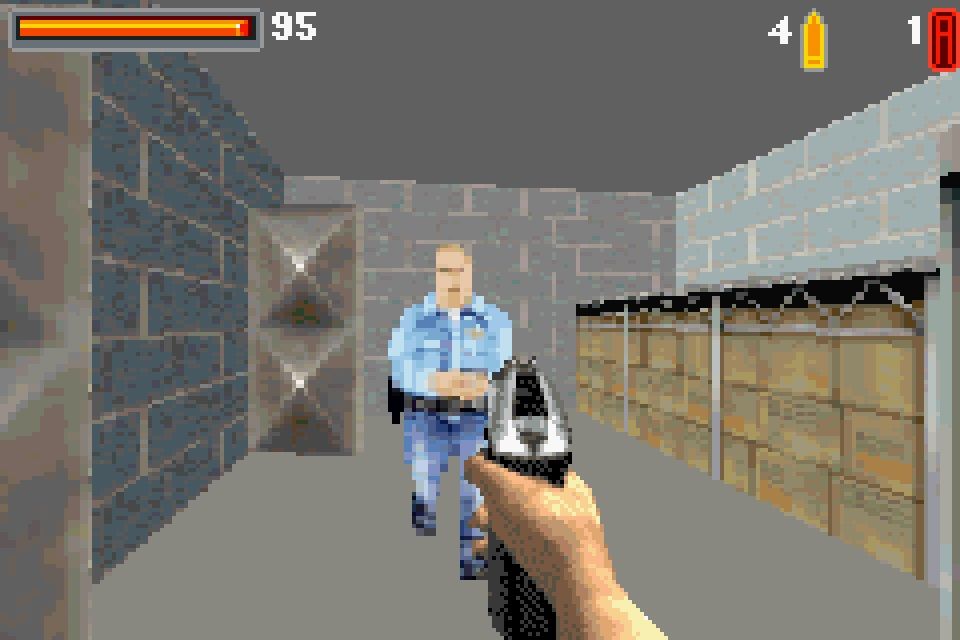
The Game Boy Advance received 13 FPS games between 2001 and 2005. Most of them used the same ideas introduced in the classic era of the genre, including pseudo-3D worlds, sprite-based characters, and no difference in elevation. Some games, like Duke Nukem Advance, offered an option for jump, while Ecks vs Sever introduced sniper rifles with working scopes.
But while the GBA era of FPS was an impressive show of what the portable was capable of, the games still had to deal with the limitations of the hardware. Few buttons usually meant control options that were a little hard to adapt, slowdowns were a common problem, and the resolution of the GBA was something that many reviewers at the time noticed was one of the downsides of the titles.

DS and PSP: New options to adapt
Handheld FPS would start to change with the release of both Nintendo DS and PlayStation Portable (PSP) consoles. The new generation of portable machines and the popularization of the genre on consoles meant that many developers started to experiment, trying to make the breakthrough game in a market that had problems attracting interest in this genre.
Not only did both handhelds have more power than the Game Boy Advance, but they also offered the possibility of new control types. The DS had a second screen with touch capabilities, which allowed for more precise aiming. Meanwhile, the PSP introduced an analog stick that allowed developers to implement 3D movement into a handheld game.

Thanks to its increased power, the PSP saw many releases trying to recreate on its smaller screen the success of titles from the home consoles. Star Wars Battlefront 2, Tom Clancy: Ghost Recon 2, Medal of Honor: Heroes, and Call Of Duty: Road to Victory, were some of the titles that came to the Sony handheld. All showed good graphics while utilizing the analog stick and buttons to offer an experience that tried to mimic what worked on consoles, like the PlayStation 2.
But trying to recreate the experience on much less powerful hardware and with fewer buttons ended up more troublesome than expected. Many critics noticed how a lack of a second analog stick meant that a compromise would be necessary to make the games have a fair challenge to the players.
Some FPS series also showed up on the PSP in a different form. Killzone: Liberations and Resistance: Retribution were both spin-offs based on Sony's FPS catalog. The first one was a top-down action game, while the second decided to use a third-person viewpoint and the differing control scheme that came with it. Both were good games, but fans of these franchises certainly noticed Sony's possible lack of faith with its portable.
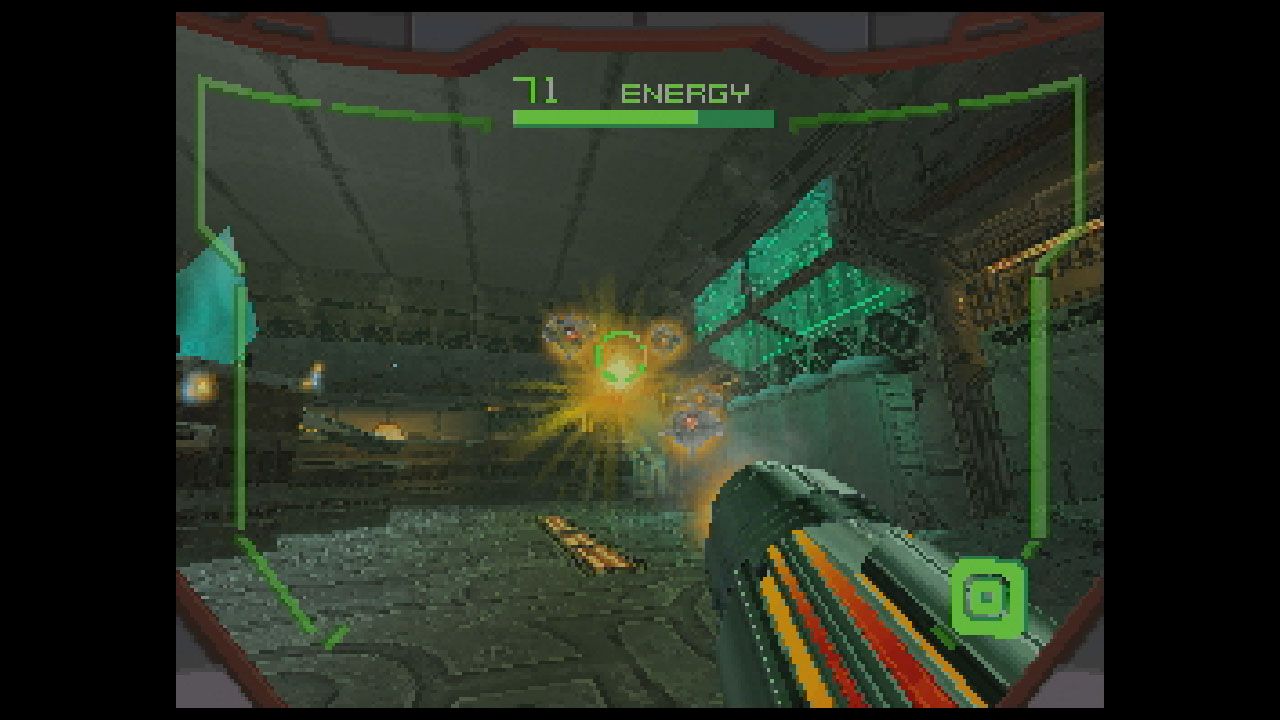
Meanwhile, the Nintendo DS had been receiving FPS games since the system launched in 2004. One of its more memorable games was Metroid Prime: Hunters, developed by Nintendo. Hunters utilized everything the DS had to offer, giving players a unique experience. The touch screen controlled the aim, and the multiplayer was fun and allowed up to four-player deathmatches. For those that didn't have access to online or local friends, it was even possible to play against bots.
The DS also was the home of the portable versions of the Call Of Duty games. After the lukewarm sales of Road To Victory, Activision decided to bet on Nintendo hardware to develop titles that would try to get fans into the handheld market. Designed by N-space, the games were inspired by their console counterparts while being a new experience that tried to do their own thing.
The DS also received new IP. The most successful of them was the Dementium series, developed by Renegade Kids, titles that mixed FPS with horror.
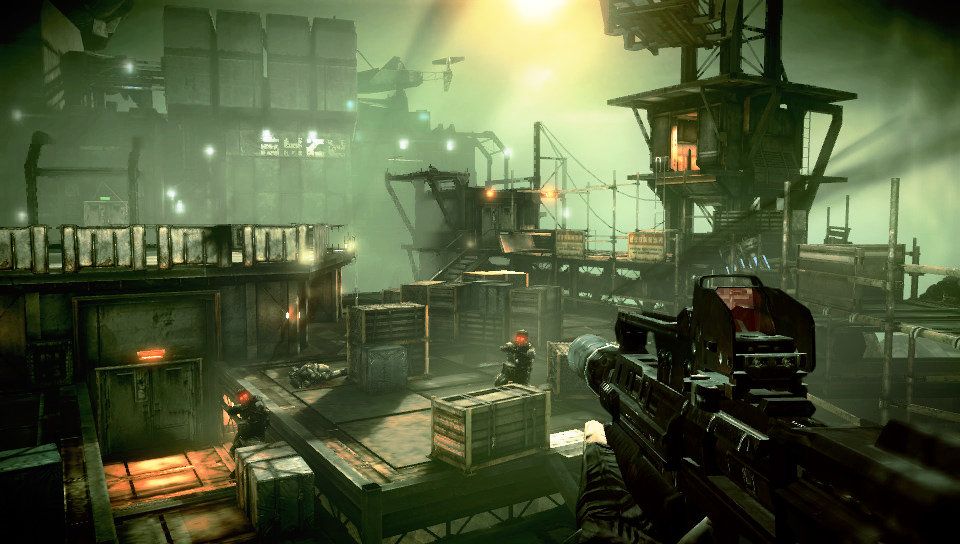
The final handheld generation
Although the PSP and Nintendo DS offered new opportunities for the FPS genre to shine on the handheld market, there was still space to evolve. The PlayStation Vita, Sony's next handheld machine, tried to raise the bar by offering better graphics and two analog sticks, which allowed developers to adapt the mechanics available on home consoles to small hardware.
Unlike the PSP, Resistance and Killzone showed up on the Vita with shooting games. Resistance: Burning Skies is considered the first dual analog FPS game on a handheld, and its status shows with a short experience and not too much to remember. Meanwhile, Killzone: Mercenary demonstrated a better use of the hardware, with fun gameplay and visuals that were comparable to the PS3 titles.
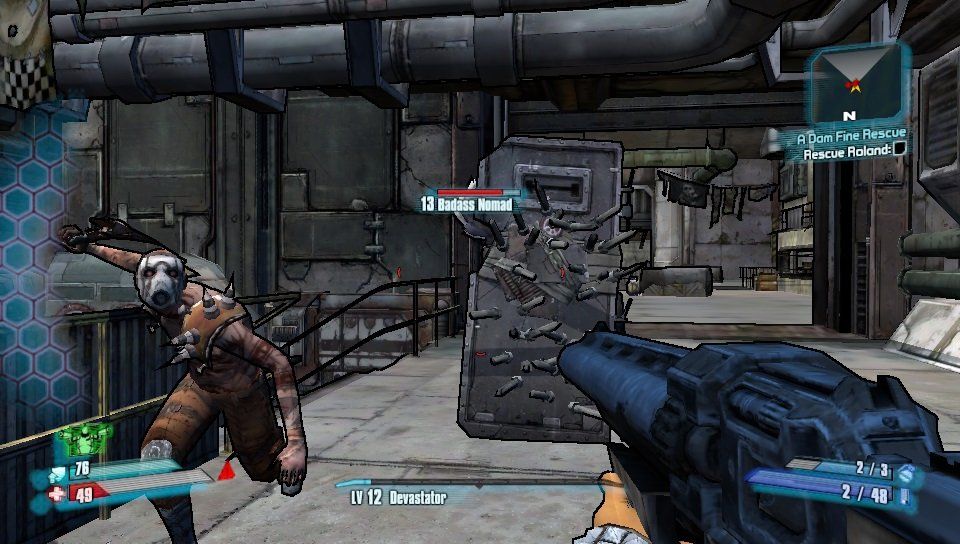
But while the Vita certainly had some potential, Sony's insistence on selling the handheld as a “PS3 machine” meant higher expectations. This pushed some developers to try to port games over to the Vita, with Borderlands 2 being the flagship FPS that was chosen to appear. While the title was made playable, it suffered from many problems, especially a drop in frame rate in many areas. It made what was supposed to be one of the biggest releases for the Vita into a disappointment.
With Sony showing a lack of desire to support the Vita and with market interest diminishing, the tentative idea of creating an FPS that could shine in the handheld market was abandoned. With the rising of mobile phones and Free-to-Play games such as Free Fire, many developers decided to try their hands at creating experiences that didn't require specific platforms.
The Nintendo Switch: A mix of both worlds
In 2022, the handheld market among the "Big Three" console manufacturers (Sony, Microsoft, and Nintendo) has been completely ceded to Nintendo's Switch. With the focus turning to mobile platforms and games like Free Fire and Call of Duty: Warzone, Battle Royales that are free-to-play, many developers are trying to get the attention of a public that focuses more on the glamor of Esports.
The platform that receives the occasional more down-to-earth FPS experiences is the Nintendo Switch. Considered both a console and portable machine, Nintendo's platform has a plethora of releases in its catalog. Doom Eternal, the entirety of the Bioshock and Borderlands franchises, and even some new IP, like Bright Memory: Infinite, are available to play on the console.
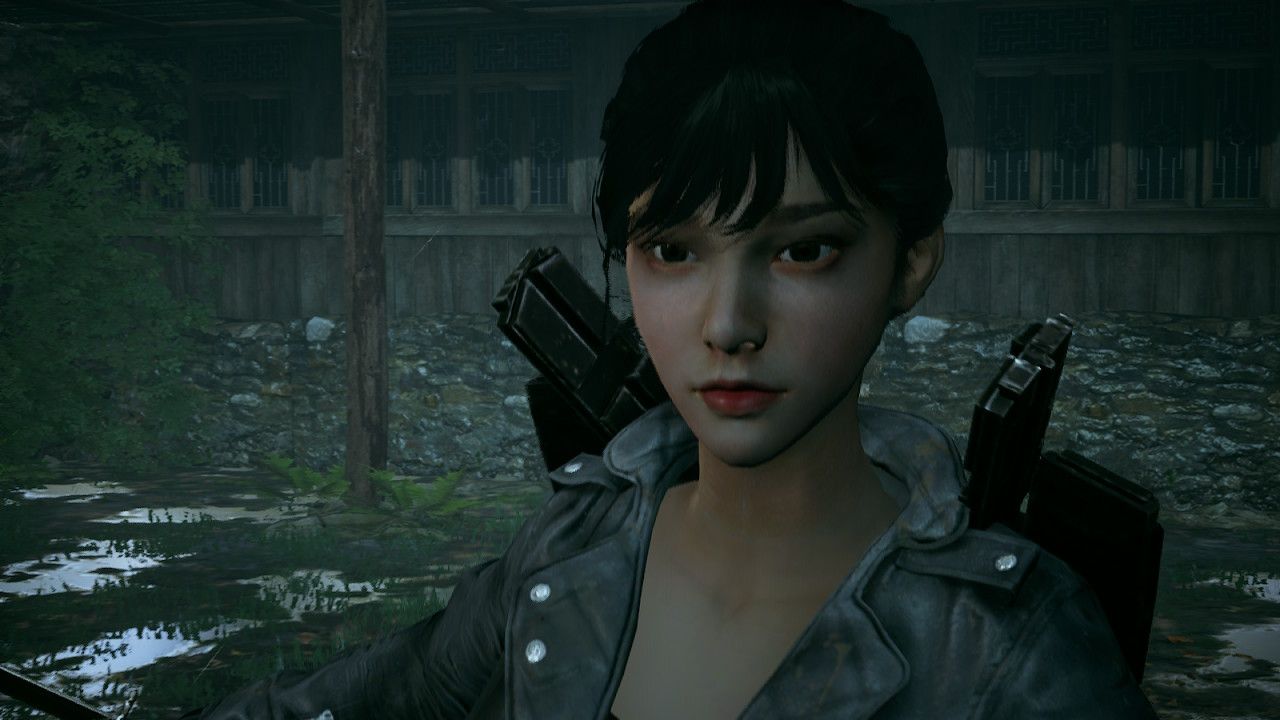
Future releases like Overwatch 2 show that many developers are still willing to put their FPS on a platform that allows for portability. It is good for the fans that the console keeps receiving these titles. After all, who doesn't enjoy laying in bed and blasting demons out of a space colony?